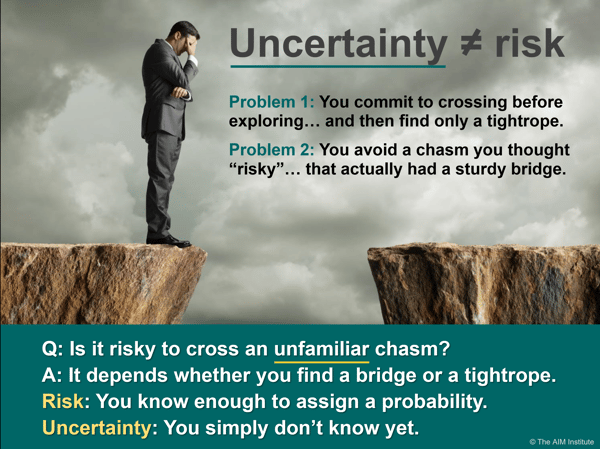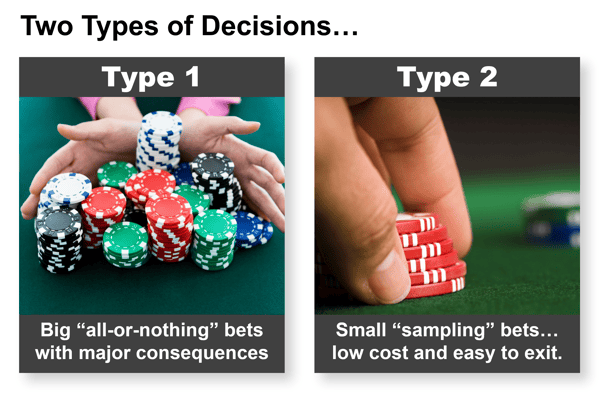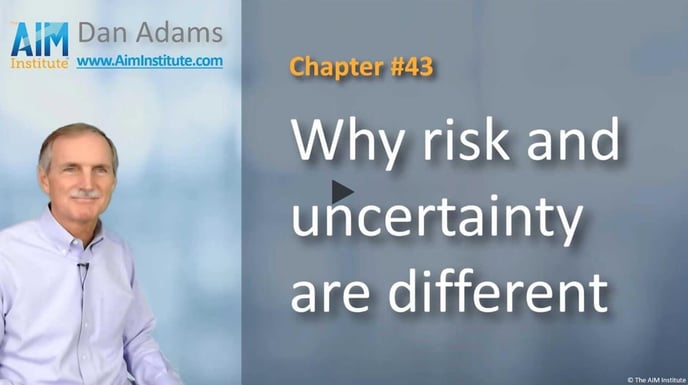Don't worry about "risk" in the early phases of a project. Instead, focus on driving key assumptions from uncertainty to certainty.
Risk and uncertainty are different beasts. To assign “risk,” you must be able to estimate the probability of a negative event. There’s a 40% chance of a thunderstorm tomorrow, for instance. With uncertainty, you simple don’t know.
Consider this example: You boss asks you to cross an unfamiliar chasm… one of the many slot canyons in southern Utah. Is this risky? It really depends on whether the chasm has a bridge over it, right? Since we said this was an unfamiliar chasm, you don’t know enough to assign risk. All you can say is that you’re uncertain.
There are a couple of problems with making decisions in uncertainty. First, you might tell your boss, “You bet I’m committed to crossing that chasm.” But then you only find a tightrope, and you are not Philippe Petit, the tightrope walker. Or you avoid a chasm you thought was dangerous… when in fact, it had a sturdy bridge all along.

See the parallel with big R&D projects? If you prematurely commit to “crossing the chasm,” this is like telling management, “trust me… you’ll love this project.” What if it turns out there’s no bridge? That is, what if there are good reasons why this project cannot succeed?
Or perhaps you had been thinking about developing a new product for an unfamiliar market… for years. But you never moved forward, because it seemed dangerous. It seemed… “risky.” Turns out, though, that your company could have had great success in this market. There was a sturdy bridge there all along.
What’s the answer? Apply options theory: Pay a little to learn a lot. In our Utah slot canyon example, this would be you asking for a plane ticket to Utah so you could check out the canyon before committing to crossing it.
This is sometimes called Type 1 vs. Type 2 betting. Type 1 bets are big bets: Management decides it’s “all in.” Type 2 bets are small “sampling” bets, aimed at learning more. In the early phases of a project, your team should focus itself—and management—on Type 2 bets. The early phases of your project should be about learning… not major decisions.

In short, your team’s goal should be to eliminate uncertainty cheaply and early. You’ll do this by identifying all the assumptions that “must be true” for your project to succeed. Then you’ll pursue inexpensive activities to drive each of these assumptions from uncertainty to certainty.
For more, check out the 2-minute video, Why risk and uncertainty are different, part of the B2B Organic Growth video series by Dan Adams.
Keywords: risk, uncertainty, certainty, assumptions, Type 1, Type 2, bets, unfamiliar chasm, options theory

